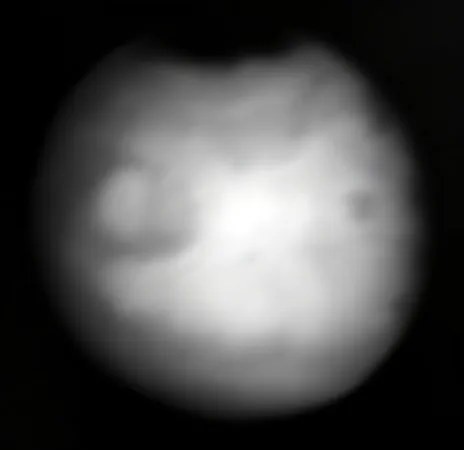
NASA's Europa Clipper Takes Stunning Infrared Images of Mars
2025-05-12
Author: Emma
NASA's Daring Mars Flyby Reveals Stunning Infrared Views
In an exhilarating maneuver, NASA's Europa Clipper spacecraft captured breathtaking infrared images of Mars during its recent flyby. This remarkable opportunity not only aided the spacecraft in calibrating its thermal imaging instrument but also set the stage for its future mission exploring the mysterious ocean beneath the icy crust of Jupiter’s moon, Europa, slated for arrival in 2030.
Aiming for Europa: The Mission's Ambitious Objectives
With its sights set on Europa, the Europa Clipper will embark on a thrilling journey through the Jovian system, conducting 49 closely monitored flybys of the moon to assess its potential for life. A pivotal aspect of this investigation hinges on thermal imaging, which will map global temperatures on Europa, revealing how dynamic its surface is and indicating possible signs of geothermal activity.
Unlocking Secrets Beneath the Ice
The thermal images will serve a crucial purpose: identifying where the subsurface ocean comes closest to the icy exterior. Europa's surface, marked by dramatic ridges and fractures, is believed to be shaped by oceanic forces pulling it apart—an indication of potential activity below.
Phil Christensen from Arizona State University, the principal investigator for the infrared camera known as E-THEMIS, emphasized the importance of measuring these fractures: "If Europa is teeming with activity, those areas will be warmer than the surrounding ice. Even remnants of past water eruptions could still show warmth, revealing clues to the moon's history."
Gravity Assist: A Clever Maneuver
On March 1, Europa Clipper soared just 550 miles above the Martian surface, utilizing the planet's gravity to alter its trajectory toward Jupiter. This gravity assist not only accelerates the journey but also provides a golden chance to test the E-THEMIS instrument.
For 18 exhilarating minutes, the camera snapped more than a thousand grayscale images, later colorized to showcase Mars’ thermal landscape—warm regions glowing red and cooler areas depicted in blue. By comparing these new images with established Mars data, scientists aim for precise calibration of the instrument.
Ensuring Precision Through Comparison
Christensen noted, "We aimed for clarity in our new images, capturing a well-documented planetary body to ensure our dataset aligns with 20 years of Mars observations." To bolster these findings, NASA's Mars Odyssey orbiter, operating since 2001, provided a wealth of thermal images for further comparison.
Testing Radar for Future Missions
Taking full advantage of the Martian proximity, the mission team also successfully tested all radar components together for the first time—a feat impossible in a clean room before the launch. Early analyses of the telemetry data from this testing phase suggest promising results.
Harnessing the Power of Gravity for Future Discoveries
To enhance their mission further, the team ensured that the spacecraft's communication equipment is primed for future gravity experiments at Europa. By transmitting signals through Mars's gravity field, they validated that similar operations will be successful at their target moon.
A Grand Journey Begins
Launched from NASA's Kennedy Space Center on October 14, 2024, aboard a SpaceX Falcon Heavy, the Europa Clipper is embarking on an epic 1.8 billion-mile journey to Jupiter—five times the distance from Earth to the Sun. With Mars now harnessed, the probe’s next gravity boost will come from Earth in 2026, driving it ever closer to unraveling the mysteries of Europa.









 Brasil (PT)
Brasil (PT)
 Canada (EN)
Canada (EN)
 Chile (ES)
Chile (ES)
 Česko (CS)
Česko (CS)
 대한민국 (KO)
대한민국 (KO)
 España (ES)
España (ES)
 France (FR)
France (FR)
 Hong Kong (EN)
Hong Kong (EN)
 Italia (IT)
Italia (IT)
 日本 (JA)
日本 (JA)
 Magyarország (HU)
Magyarország (HU)
 Norge (NO)
Norge (NO)
 Polska (PL)
Polska (PL)
 Schweiz (DE)
Schweiz (DE)
 Singapore (EN)
Singapore (EN)
 Sverige (SV)
Sverige (SV)
 Suomi (FI)
Suomi (FI)
 Türkiye (TR)
Türkiye (TR)
 الإمارات العربية المتحدة (AR)
الإمارات العربية المتحدة (AR)